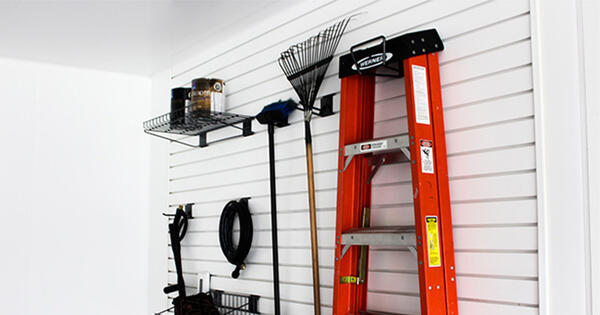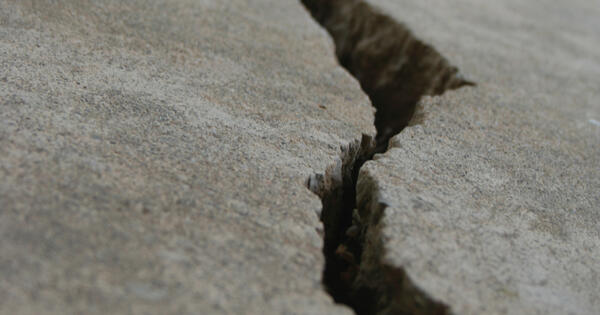When finishing your basement, the floors and walls are often the first to get sorted, leaving your basement ceiling last on your to-do list. If you’re wondering what your basement ceiling options are, you’ve come to the right place.
Unlike other areas of your home, basements are typically casual spaces, which means you have more flexibility to experiment with what your ceiling looks like and showcase your unique style. In this blog post, we share ten ceiling options for your basement that can help you fully finish your space.
Why Cover Basement Ceilings?
Some homeowners may choose to leave their basements unfinished and treat them as extra storage space. However, most will choose to finish it to create a livable extension of their home, and there are a few benefits to covering your basement ceilings:
- If you plan to use your basement as a living area, entertainment space, or home office, a finished ceiling will create a more polished appearance and inviting atmosphere for your family and guests alike.
- Covering your basement ceiling can help improve the insulation of the space and regulate both temperature and sound.
- A finished basement can increase the value of your home if you plan to sell it in the future.
- And unlike other areas in your house, your basement can allow you to get creative and add personality by using different materials, colors, and designs you might be hesitant to try in higher-traffic areas of your home.
10 Basement Ceiling Options to Fully Finish Your Space
From painted drywall to decorative ceiling tiles, there’s no shortage of basement ceiling options to choose from:
Drywall.
If you want your basement to look consistent with the rest of your home, you can play it safe and stick with painted drywall. However, drywall is very messy to install (especially when you have to sand it!), and it won’t let you access the mechanical, plumbing, and electrical systems running along your ceiling without cutting a hole in it. (There are several other reasons why drywall isn’t the answer for your basement, too.)
PVC panels.
If your basement is prone to moisture and doesn’t get much natural or fixture lighting, install PVC panels like Trusscore Wall&CeilingBoard. The pre-finished panels are 100% moisture and water resistant, meaning they’ll never grow mold or mildew, and they reflect 90% of the light that strikes them to make small, dark spaces appear larger. Plus, panels can be replaced if you need plumbing or electrical repairs.
Wood planks.
For a natural finish that adds warmth and texture to your space, consider installing wood planks. Darker, polished planks will create a swanky look and feel — perfect if your basement has a bar and pool table — while lighter-colored planks will create a more rustic and cozy appearance.
Beadboard.
Beadboard is a trendy yet inexpensive ceiling option that is pre-finished and pairs with contemporary or casual styles. It’s also available in multiple colors, allowing you to get creative, and planks have a tongue-and-groove edge for easy installation.
Shiplap.
Like beadboard, shiplap is a trendy way to cover your ceiling while adding visual interest and texture. Shiplap is durable, cost-effective, and easy to install. The design of the planks also makes it easy to work in an undetectable access panel for the systems in your ceiling.
Drop ceiling tiles.
If your basement ceiling is high and you know you may need frequent access to plumbing and electrical, drop ceiling tiles are a classic and reliable basement ceiling cover. The lightweight tiles are suspended from a grid system attached to the ceiling and are easy to move. They also come in a variety of sizes, and some tiles can even add additional soundproofing or fire resistance to your basement.
Decorative ceiling tiles.
For a more intricate and elegant design that uses the same system as a drop ceiling, consider using decorative ceiling tiles. These tiles have a molded or even embossed design that’s meant to visually upgrade your space and make your basement a classy extension of your home.
Adhesive ceiling tiles.
If decorative ceiling tiles aren’t in your budget, but you want a visually interesting basement ceiling, you can create a similar effect for a fraction of the cost using adhesive ceiling tiles. The tiles are available in an endless number of shapes, sizes, and colors and go on with glue, so they’re DIY friendly. However, you’ll have to install plywood first, so they have something to stick to.
If you're hesitant to commit to one of the above options or covering your ceiling isn’t in your budget, and you still want your space to look finished, consider the following:
Paint the joists black.
Black is a clean and modern color that, when applied to joists, can seamlessly disguise the plumbing, electrical, and mechanical systems in your ceiling. Black paint has the bonus of helping your basement look larger: By obscuring the borders of the ceiling and the wall, it can make the ceiling appear higher than it is. This illusion works particularly well if you paint the tops of your basement walls black, too.
Paint everything white.
On the opposite side of the color spectrum, consider applying a coat of bright-white paint to your basement ceiling joists in the basement ceiling, as well as everything contained in it, like pipes, ductwork, and lighting fixtures. Covered in white, these systems will look like sculptural add-ons to your space.
Find a Retailer
Trusscore works with thousands of retailers across North America to bring you the best service and access to our products.
Trusscore Wall&CeilingBoard is the Sustainable Choice for Your Basement Walls and Ceiling
Everyone wants a bright, dry, mold-free basement that drywall and wood-based coverings can’t promise. For basement walls and ceilings, Trusscore has you covered.
Trusscore Wall&CeilingBoard are 100% moisture and water-resistant and are available in a bright white or soft gray finish so you can function and style your space.
If you’re finishing your basement yourself, Trusscore Wall&CeilingBoard is also easy to install — panels weigh 40% less than drywall and, combined with a pre-punched flange and tongue and groove interlocking system, install four times faster. Any off-cuts from your project are also 100% recyclable.
Plus, once you’ve installed the panels, you never have to worry about them again. They’re scratch, dent, and damage resistant and can be kept clean with a little soap and water.
To see how much it could cost to cover your basement wall and ceilings with Trusscore, check out the Trusscore Cost & Materials Estimator.


![How Much Does It Cost to Finish a Basement in 2026? [Complete Pricing Guide]](/content/images/cache/blog/cost-basement/basic-land.aae4a3cd.png)



